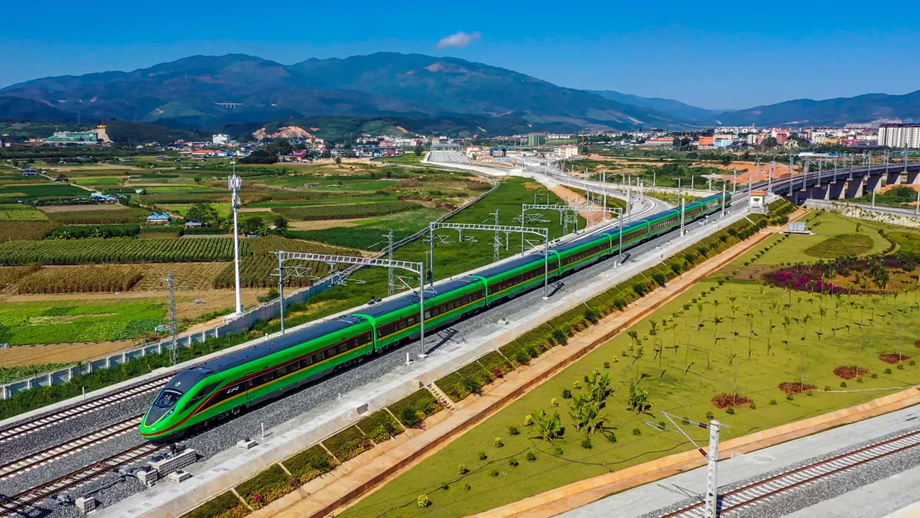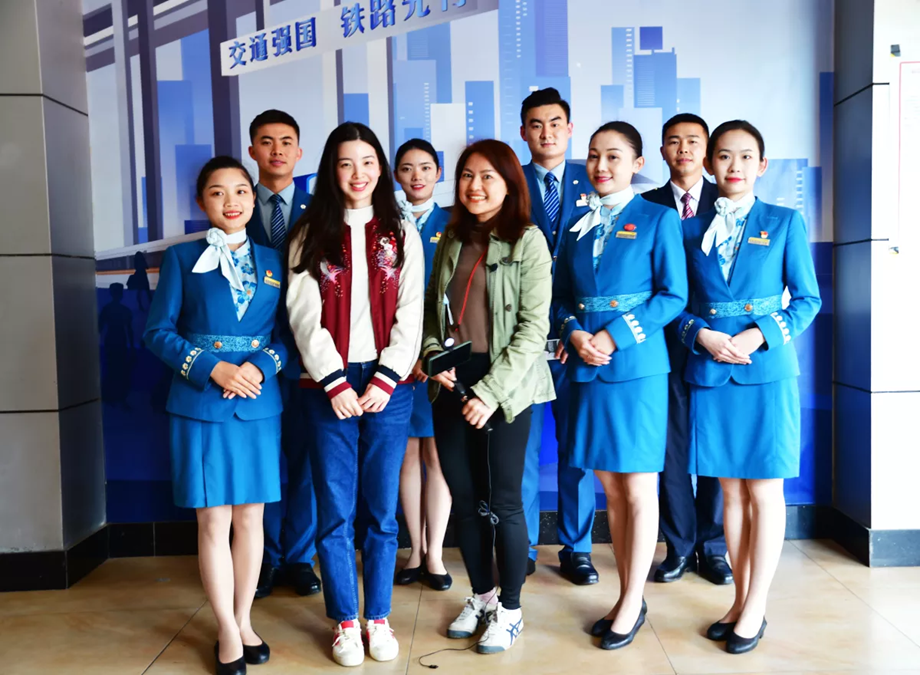Stories Behind the China-Laos Railway Bring Hearts Closer
With a total length of 1,035 kilometers, the China-Laos Railway runs southwards from Kunming, China, to Vientiane, Laos. As the first high-speed railway in Laos, the China-Laos Railway has driven the economic and social development along the route.
Since the operation of the China-Laos Railway on December 3, 2021, some regions of Yunnan Province bid farewell to the history of no trains. What are the stories behind the opening of the China-Laos Railway? On May 24, a group of drivers, attendants, and conductors from the China Railway Kunming Group accepted an exclusive interview, talking about the stories and features of the train.
 The China Railway Kunming Group accepted an exclusive interview on May 24. (iChongqing/ Chen Zhan)
The China Railway Kunming Group accepted an exclusive interview on May 24. (iChongqing/ Chen Zhan)
Pre-simulation exercise
Standing out among 3,900 candidates, Hu Jian was selected as the first train driver of the China-Laos Railway with excellent driving skills. “I have listened to the adults talk about the happy life bought by trains since I was a child, which made me eager to become a train driver,” said Hu.
Before the official launch of the China-Laos Railway, Hu and his colleagues endeavored to practice repeatedly on the railway every day. “We adopted simulation exercises while practical training in the field,” he said.
The complex terrain along the railroad line was one of the biggest difficulties encountered by the team. “The China-Laos Railway has a high tunnel ratio of 87%, which means we spent almost 3 hours of the 4-hour journey in the tunnel,” he added. “This requires us to be familiar with the location and mileage of each railway tunnel, the operation of the emergency lights, and the emergency broadcast area inside each tunnel.”
 A picture of the China-Laos Railway. (Photo provided to iChongqing)
A picture of the China-Laos Railway. (Photo provided to iChongqing)
For example, they simulated how many passengers were in each carriage and to which position they had to evacuate them in case of emergency. Eventually, the team used countless arguments to conclude a manual for emergency response in the China-Laos Railway tunnels.
Special services
Providing special services, the China-Laos Railway aims for a better experience for passengers with the improved services from the aspects of sight, hearing, taste, smell, and touch, said the conductor He Jianbo.
The uniform combines the special elements of both China and Laos, such as silky and flowery suits, showing an excellent professional image to all passengers. “Especially the suits with the peacock blue convey an overwhelming enthusiasm,” He said.
 iChongqing reporter Zhan with the drivers, attendants, and conductors from China Railway Kunming Group. (Photo provided to iChongqing)
iChongqing reporter Zhan with the drivers, attendants, and conductors from China Railway Kunming Group. (Photo provided to iChongqing)
In addition to the staff appearance, the clean travel environment is also linked with the national features. Chinese knotting, a type of decorative handicraft art, is one typical example. “The five-color Chinese knotting represents the different identities of key passengers on the train,” said He.
Blue representing tranquility means that there are elderly passengers on board; yellow for happiness indicates the child passenger; green means a health issue, representing the sick passenger; purple mainly indicates those with limited mobility or need some assistive devices; red represents vitality which means pregnant women.
The broadcast is divided into domestic and foreign segments in terms of hearing. For example, we speak the Dai language in the domestic section because the train will pass through these minority areas. Those elderly travelers may not understand Chinese, according to He.
Furthermore, many tourists come to the China-Laos Railway because of its food. “Our food includes fried chicken, fried milk, even Starbucks. And we also provide some packages for local ethnic minorities along the route, such as sour bamboo shoots beef, and roast pork,” he said. “We start from every detail to provide all passengers with a pleasant journey.”
Editing by Wang Qing